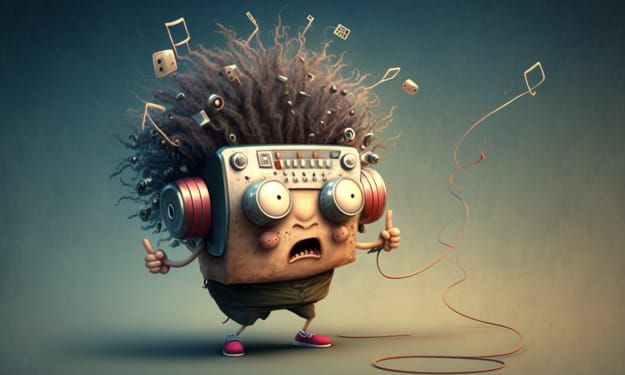What is a Chatbot AI?
And how does it work?

Chatbot AI is a rapidly growing area of technology that has the potential to revolutionize how we interact with machines. It can be used in many different ways, from customer service and product recommendations to healthcare applications and virtual assistants. The possibilities are endless! With advances in artificial intelligence (AI) technology, chatbots have become increasingly intelligent and sophisticated, able to understand natural language, respond to queries quickly and accurately, and even complete tasks on their own. But what exactly is a chatbot AI? What makes it so effective compared to other methods of interacting with computers? In this article, we’ll explore the basics of chatbot AI as well as its current capabilities and future implications.
The concept of AI-powered chatbots isn't new; it's been around for decades. However, recent advancements in AI technologies such as machine learning algorithms have allowed these bots to become more complex than ever before. Chatbot AIs are now capable of understanding human interactions better than ever before—they don't just recognize patterns but also comprehend context clues like intonation or facial expressions. As a result, they're becoming an integral part of our lives: powering customer service lines, driving conversations through social media platforms, helping us find information faster online...the list goes on!
In short, there's no denying the power of chatbot AI when it comes to automating everyday tasks or providing personalized experiences. Its potential is immense - but unlocking this potential requires a deeper exploration into what makes it tick. By diving deep into the world of chatbots powered by artificial intelligence – including their history, current state and expected future development – you'll gain valuable insights about this fascinating field that could help shape your business strategy going forward.
What Is A Chatbot AI
Chatbot AI is a type of Artificial Intelligence (AI) technology designed to simulate human conversations. It enables computer programs to communicate with users in natural language and provide them with automated answers or suggestions. Chatbots have become increasingly popular over the last few years, as they can be used for customer service, marketing campaigns, virtual assistants, and more.
Parallelism helps make this conversation-based technology stand out from other types of AI. For example, while machine learning algorithms are great at analyzing data sets, chatbots are better equipped to process user queries directly through spoken dialogue. Similarly, while natural language processing models enable computers to understand text input more accurately than ever before, chatbot AI takes it one step further by being able to converse with people in real time.
The applications of chatbot AI range from providing basic information on websites to helping companies automate customer support inquiries. By leveraging its ability to interpret natural language inputs quickly and accurately -- along with its conversational capabilities -- businesses have been using chatbot AI to streamline their operations and improve efficiency across multiple industries. Indeed this technology has revolutionized how companies interact with customers online; allowing for faster response times without sacrificing accuracy or quality of service.
Chatbot AI is transforming the way we interact with machines — giving us new possibilities when it comes to receiving help quickly and conveniently. As such, understanding how these systems work is essential if you want your business or organization to maximize the potential benefits that come along with implementing this advanced technology solution into your workflow.
How Does A Chatbot AI Work
Chatbot AI is a rapidly growing technology, and understanding how it works can help us to better utilize its potential.
Take the example of an online shopping website: imagine that you’re just browsing through products, trying to decide between two items. A chatbot AI on the page could be monitoring your activity, helping you out by providing product comparisons or recommending related items without any effort from you. This is how powerful these systems can be – they can track our behaviour and provide automated advice in real time.
But behind this useful feature lies complex programming code that enables the chatbot AI to work as well as it does. Essentially, there are three core parts involved when building a conversational system: natural language processing (NLP), machine learning algorithms, and dialogue management. NLP helps the bot understand what users say; machine learning algorithms allow them to infer meaning and make decisions; while dialogue management provides an efficient way for the bot to respond appropriately based on user input.
Chatbot AI is thus a highly sophisticated blend of technologies – each playing an important role in powering intelligent interactions with users. With technological advancements continuing at such a rapid rate, we're likely to see more applications utilizing this technology in interesting ways – offering even greater possibilities for automating tasks and simplifying user experience.
Benefits
Chatbot AI technology has become increasingly popular, as it offers a range of benefits to businesses and consumers alike. One of the primary advantages is that chatbots are able to automate customer service tasks by responding rapidly and accurately to queries. This helps companies save money on labor costs while also providing customers with quicker responses and improved experiences. Additionally, chatbot AI can be used for marketing purposes, enabling companies to target their audiences more precisely through personalized messages and content. Finally, since they can be integrated into existing systems such as websites or apps, implementing these technologies does not require extensive changes in infrastructure or processes.
By leveraging the power of machine learning algorithms, chatbot AIs have made significant progress in understanding natural language input from users and responding accordingly. This allows them to provide an engaging experience for both customers and employees which could otherwise be difficult to achieve without automation. In this way, chatbots offer organizations a cost-effective solution for streamlining communication. With all these advantages, it's no wonder why so many people are starting to use them within their operations.
Challenges
Coincidentally, the same technology that can provide us with convenience and efficiency also has a downside. While chatbot AI can be extremely helpful in providing customer service support, there are challenges associated with them as well.
First of all, it is difficult to develop a natural-sounding conversation for these bots—they often come off sounding robotic or stilted. Additionally, they require frequent maintenance due to their complexity and sensitivity to changes in language usage. This can be time-consuming and costly if done manually, but luckily many companies have developed automated solutions to help manage this process more efficiently.
Another issue is the fact that chatbots lack contextual understanding; they may not always be able to understand intent behind specific questions or statements from users. They’re programmed using predefined rules which limit their ability to learn over time and respond appropriately given different contexts. As such, they might misinterpret certain requests or commands leading to incorrect responses being provided by the bot.
Finally, although some people find interacting with bots convenient, others still prefer direct communication with humans when seeking assistance or advice on a matter. Chatbot AI therefore doesn't replace human contact entirely but rather serves as an additional layer of customer service support.
So while chatbot AI certainly presents its own set of challenges, it remains an important part of our current technological landscape – one that will likely evolve further as technology advances...
Future Of Chatbot AI
The future of chatbot AI is bright, and the sky's the limit. It's an exciting time for this technology as it continues to evolve rapidly with new capabilities being developed all the time. We're already seeing many different industries utilizing these bots to automate tasks, streamline processes, and improve customer service experiences. This trend looks set to continue in the coming years, as more companies recognize the potential of using AI-powered chatbots for their business operations.
One particular benefit of chatbot AI that we are likely to see more widely adopted in the near future is its ability to provide personalized customer support. With access to vast amounts of data about a user’s preferences, purchase history etc., a chatbot can be programmed to give tailored advice or recommendations based on those individual needs. Such advancements will help businesses develop relationships with customers at scale and boost loyalty through enhanced customer experience.
In addition, natural language processing (NLP) technology has continued to mature over recent years which means that conversations between humans and robots become increasingly naturalistic and intuitive. As this technology advances further still, it won't just be people talking directly with machines but also conversing amongst each other via digital assistants such as Amazon Alexa or Google Home - creating entirely new ways for us to interact with our environment.
It's clear that chatbot AI presents huge opportunities for businesses across all sectors - from transforming operational efficiency to revolutionizing customer interactions – so there's no doubt that this area of technology is only going up from here!
Conclusion
Chatbot AI is a revolutionary technology that has the potential to completely change how we interact with machines. As artificial intelligence rapidly advances, chatbot AI has enabled us to create more intelligent and natural conversations between humans and bots. The benefits of using this technology are immense – from cost savings to improved customer service experiences. However, there are still some challenges that need to be overcome before its full potential can be realized, such as security issues and user acceptance.
As we look towards the future of chatbot AI, it’s clear that these technologies will continue to evolve and become even smarter over time. With further advancements in machine learning and natural language processing, we may soon reach an age where conversational interfaces appear indistinguishable from those of humans. How far will we go in our pursuit of true human-machine interaction? That remains to be seen!
About the Creator
Patrick Dihr
I'm a AI enthusiast and interested in all that the future might bring. But I am definitely not blindly relying on AI and that's why I also ask critical questions. The earlier I use the tools the better I am prepared for what is comming.






Comments
There are no comments for this story
Be the first to respond and start the conversation.